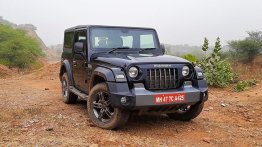Lighter, smaller and cheaper version of the Renault Kwid.
Since the brand's revival in 2013, Datsun hasn't made any significant strides in the Indian market with the Go and Go+. Despite being sold at highly competitive prices, it didn't click with the market particularly because of the brand's small-but-fledgling presence and the obvious cost-cutting measures seen in the two products, which are deal-breakers for some.
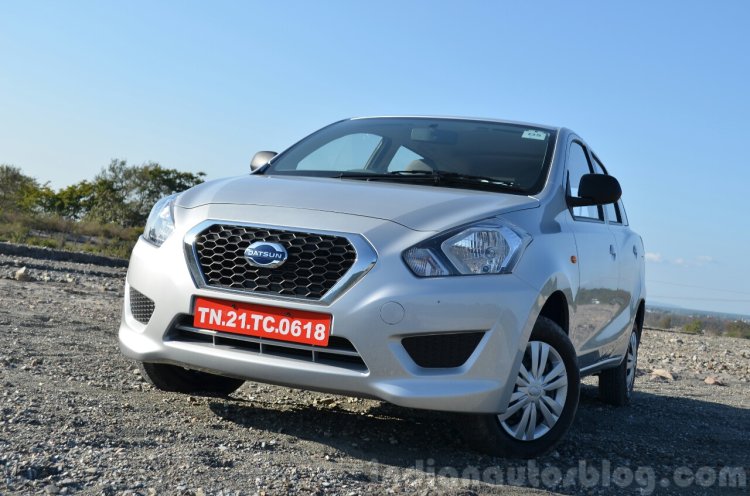
Datsun is still committed to tap the entry-level segments in the Indian market, and decided to put one of their most popular concepts into production - the Datsun redi-GO concept. Unveiled at the Auto Expo 2014, the redi-GO previewed a mini crossover that could compete in one of India's fiercest segments comprising of the country's bestseller, the Maruti Alto, as well as other popular cars like the Hyundai Eon and Renault Kwid.
And, after just over two years since the redi-GO concept came under the spotlight, Datsun has finally unveiled the production-spec model that aims to turn the tables for the fledgling brand in the country. Datsun claims that the redi-GO offers several "best-in-class" features that could appeal to the mass market. Pair that to an evolutionary exterior design, new platform and an expected price range of INR 2.5 Lakhs - INR 3.5 Lakhs, and the redi-GO starts to sound interesting.

To find out whether the redi-GO is as compelling as it sounds, Datsun invited IAB for the first drive held in the City of Joy i.e Kolkata. And after a fair bit of pootling, here's our first drive review of Datsun's most important product to date.
Exterior Design and Features:
The tall, Ruby Red-colored little hatchback that you see below retains the redi-GO branding from the concept which, as cheesy as it sounds, is derived from the car’s ‘ready to go’ character. At first glance, the high ground clearance and compact proportions give a slight impression that it is ready to take on whatever India has to offer.
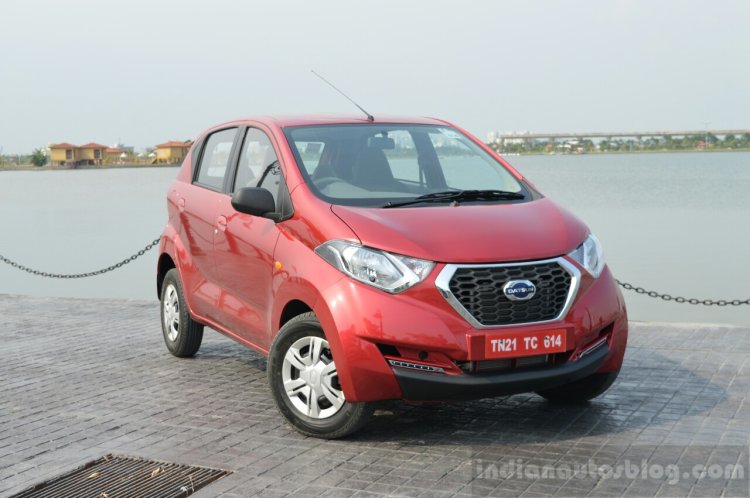
There are very little differences with the exterior of the redi-GO concept and its production-spec avatar. And that’s a good thing actually, because the design of the redi-GO concept was quite the looker. It's definitely a significant improvement from what we've seen in Datsun's product range post-revival.
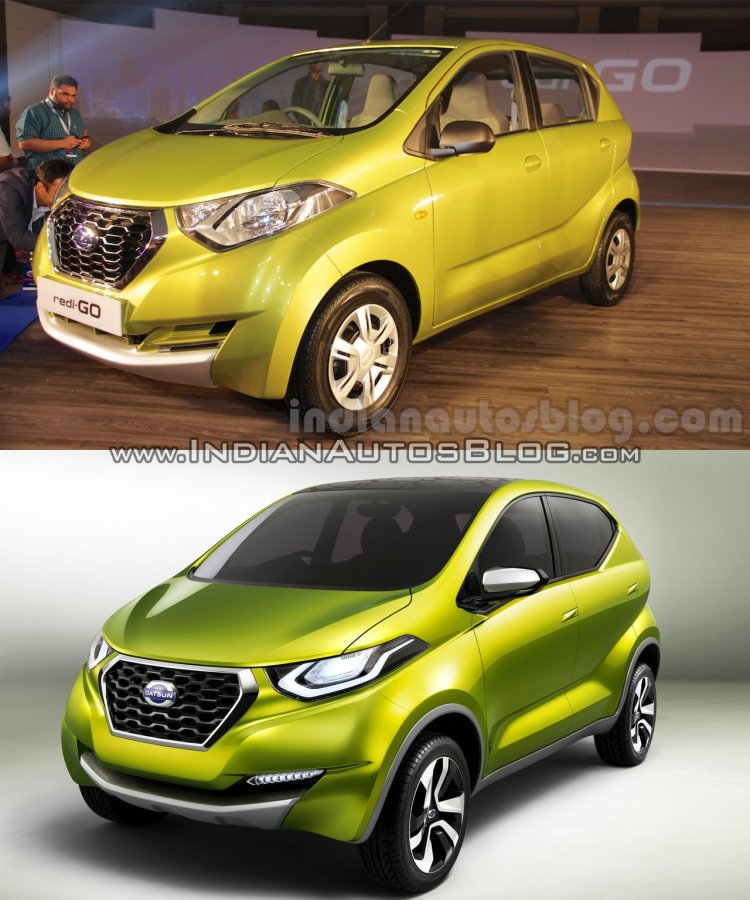
Datsun is intent on calling the redi-GO an "Urban Cross", particularly to gauge the mass market's newfound preference for A-segment crossovers, courtesy of the Renault Kwid. Unlike its French cousin, the redi-GO doesn’t have any black plastic bits and bobs to impart a rugged look. Instead, the exterior has generous number of sculpted features that nicely break up the tall-boy design of the redi-GO.
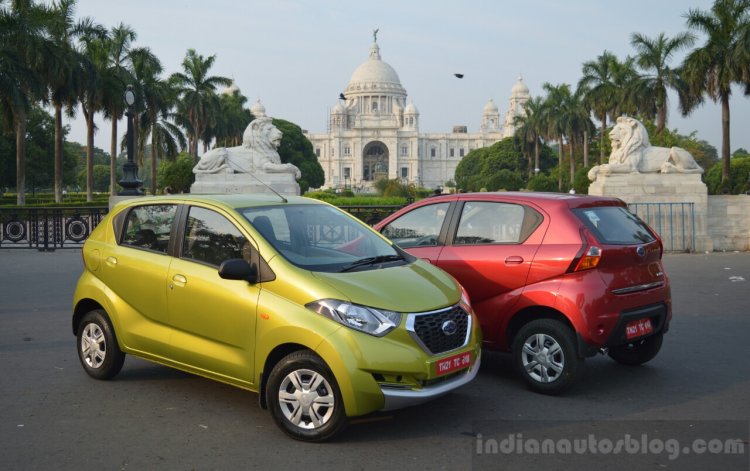
The design is based on two main character lines, one of which starts from the front registration plate, into the window and joins the taillamp. The other is an even bolder line that breaks up the lower portion of the side profile, which is taken straight off from the concept. It's not often that we see manufacturers pay good attention to the design of an A-segment product.
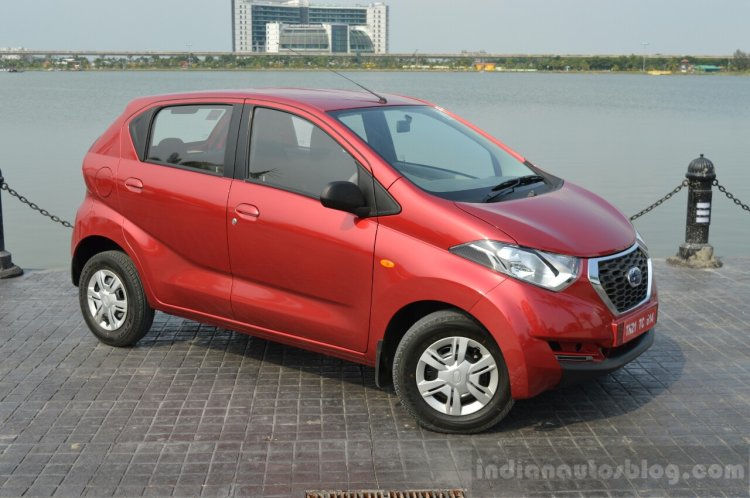
According to Datsun, one of the biggest selling points will be its 185 mm ground clearance, which is the highest in the segment. Better still, it's even taller than a Mahindra TUV300! Even though Indian road conditions are improving, there are enough places where the redi-GO’s good ground clearance can be a boon. Also it gives the exterior an 'urban crossover' look that Datsun is trying to market.
Interior Design and Features:
The Datsun redi-GO greets you to a basic interior that is fairly expected given the price range it's targeting. The cabin is finished in beige, and features piano black trim on the center console and silver accents around the HVAC vents, steering wheel and front power-window buttons, which break the monotony of the beige dashboard. The interior build quality is slightly worse than the Renault Kwid, where the plastic materials flex with little effort.
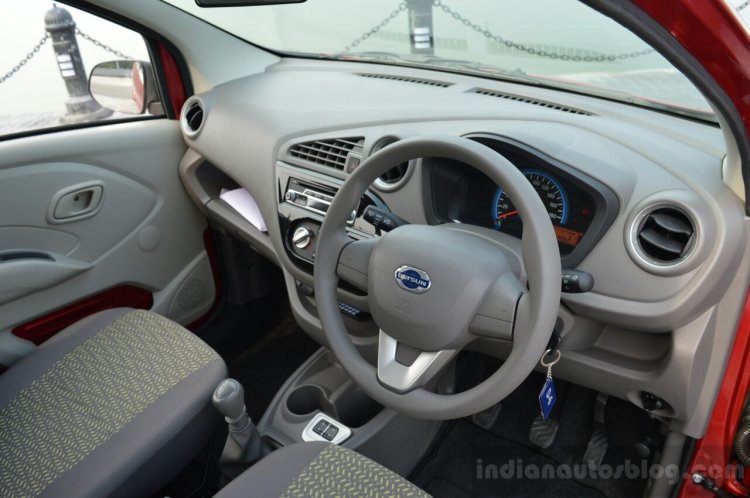
Despite that, the build quality pales in comparison to the vast amount of exposed body-painted metal in the cabin, which is a clear sign of cost-cutting. When this was brought up to one of Datsun's executives, he has assured that the company will offer body panels to cover up the exposed portions, although they will be optional extras for purchase.
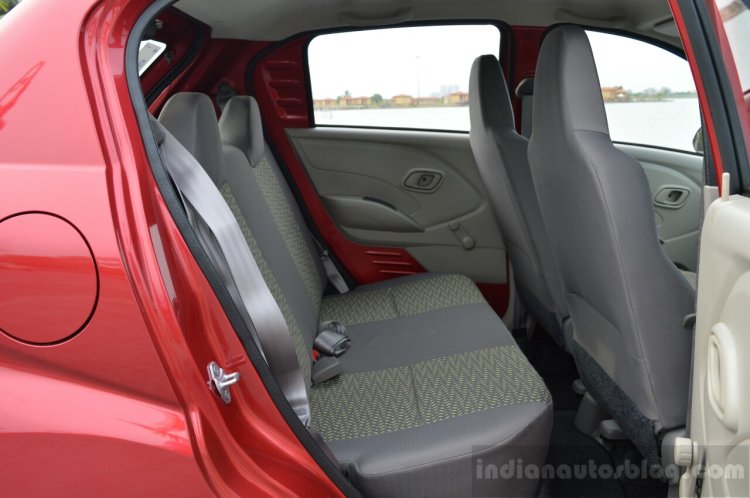
Compared to its rivals, the height of the redi-GO makes egress and entry much easier for sizable folks. The greenhouse contributes to the airy feel of the cabin and offers great frontal visibility, which is a must if your commutes involve traffic-clogged streets. A mention must also be made about the ORVMs that are perfectly sized with very thin bezels, although they lack any internal adjustments (even in the top-end grade). The rear visibility is quite hopeless, thanks to the small IRVM and unusually thick C-pillars.
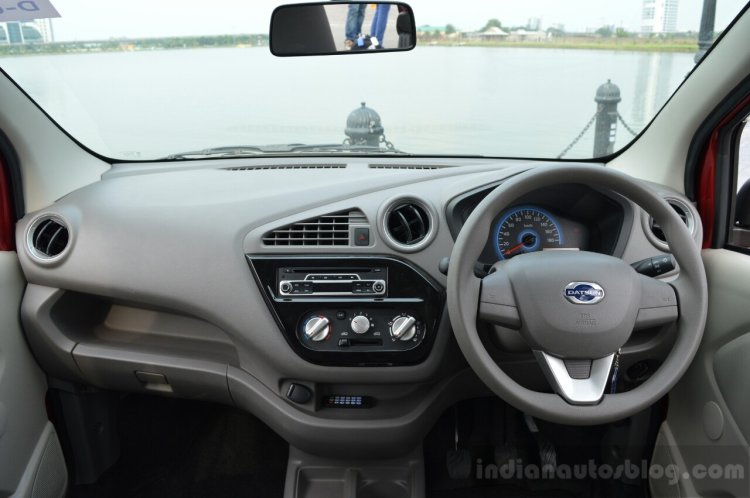
The thin front seats upholstered with a fabric material offer decent support for the user's back & thigh, and the good seating experience is further complemented by the great frontal visibility. There is decent amount of headroom, although the redi-GO offers neither height adjustment nor tilt adjustment for the seats and steering wheel respectively. Yet I didn't find myself missing the two options.
The single zone HVAC system managed to cool the cabin fairly quickly, which was a relief in the humid Kolkata weather. Interestingly, the triangular vent in the center console is fixed and designed to blast air towards the rear occupants.
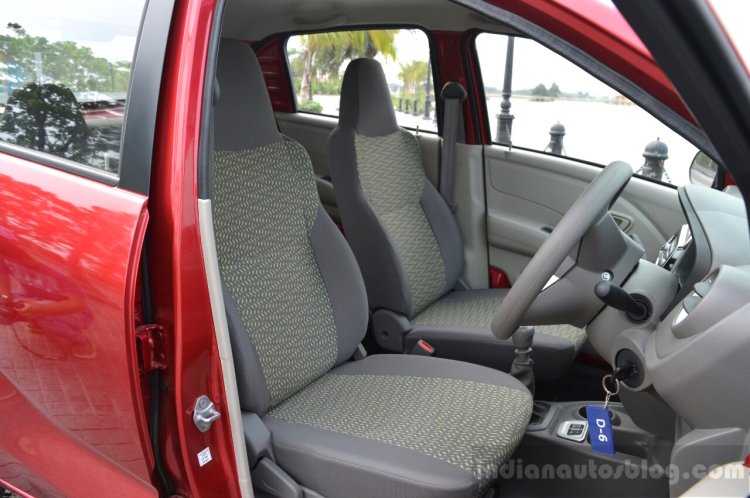
When kept at my seating position, there is sufficient amount of knee-room for an occupant below 6-footer. Apparently, this is better than what rivals offer, and can even compete against the likes of the more expensive Maruti Celerio. The rear bench is flat and its cushioning is on the softer side, making it adequately comfortable. Occupants sit tall for good under-thigh support, although the bench itself is narrow to accommodate three people comfortably. The rear seat-belts do not automatically retract, thus requiring manual tightening to firmly hold occupants into place.
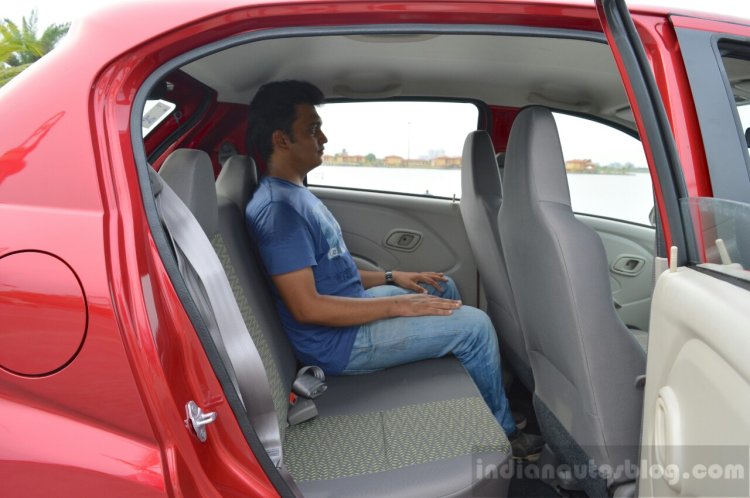
Storage spaces in the Datsun redi-GO are limited. Unlike the Renault Kwid, the redi-GO doesn't get bottle holders in the door panels. Instead, Datsun has designed a bottle holder and a cup holder under the HVAC controls. Boot volume is rated at 222 liters, which is significantly lower than the Kwid's class-leading 300L volume. It can be increased by folding the backrest of the bench seat, although the loading lip is found to be high and narrow.
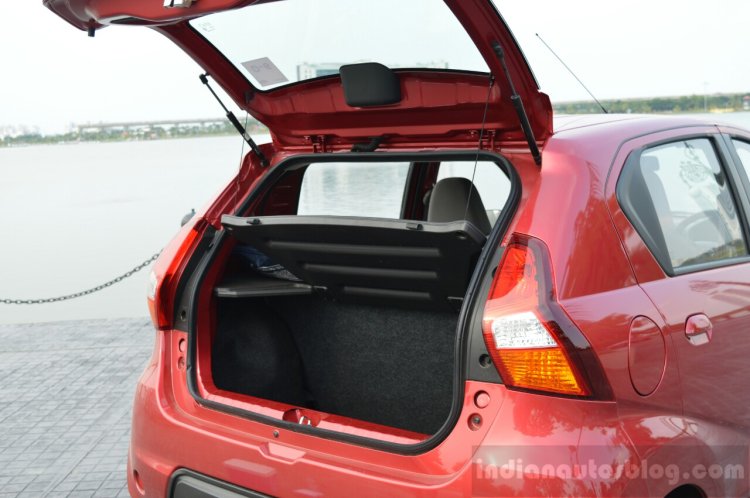
As for equipment levels, the redi-GO isn't going to set your heart racing. Then again, it’s not really fair to complain about the lack of features when you consider the price range that Datsun’s targeting. There are some features that Datsun should've considered offering, such as central locking and bluetooth connectivity, which are slowly being standard in top-end grades of entry level hatchbacks. In its segment, people are hailing the Renault Kwid for offering a 7-inch touchscreen system with navigation whilst keeping prices highly competitive.
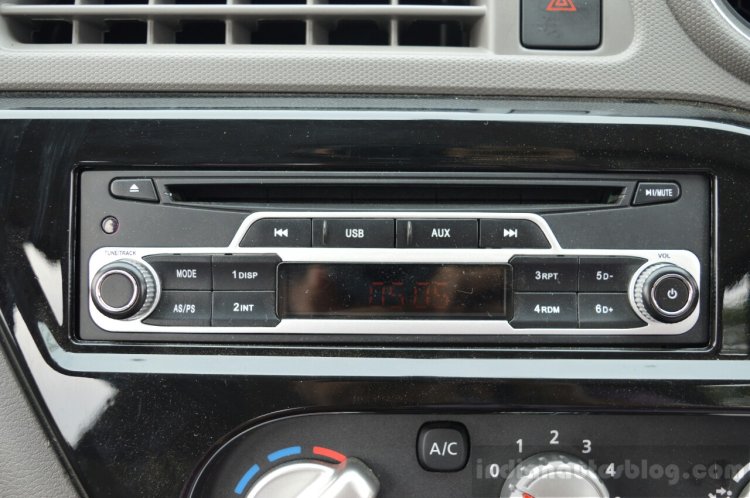
The music system has a display to tell you which song you’re playing. No, we're not being sarcastic here, as the even more expensive GO or GO+ do not have this. The redi-GO's system also features radio, CD player, AUX and USB input, while its bigger siblings make do with only AUX input. Other than that, the top-end redi-GO gets two power-operated windows for front occupants and an optional driver's airbag.
Engine and Gearbox:
The Datsun redi-GO borrows the 3-cylinder, 799 cc all-aluminium engine from the Renault Kwid, which produces 54 hp at 5,678 rpm and 72 Nm at 4,388 rpm. It is paired to a 5-speed manual gearbox that sends power to the front two wheels.

If you have driven the Renault Kwid, then the redi-GO's performance will feel slightly familiar. The Datsun is around 25 kg lighter than its French cousin, and it is apparent from the 0-100 km/h acceleration times which, according to Datsun, is a best-in-class 15.98 seconds.
Upon start-up, the small displacement engine vibrates to life, which can be felt through the steering wheel. Raising the rpm will negate the vibrations and introduce you to the characteristic three-cylinder thrum. Thanks to the super-light clutch with a decent range of travel, setting off from standpoint is relatively easy, although you may have to dab the throttle early on to avoid stalling the motor.
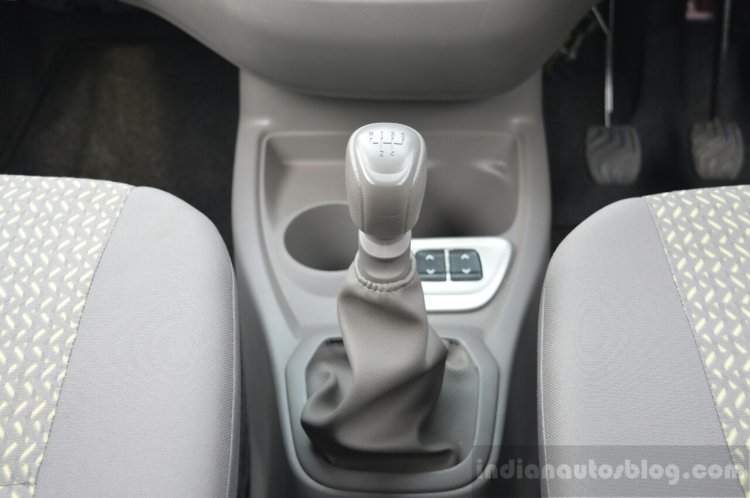
Once you set off, the redi-GO will feel at home inside cities where speeds are usually below 80 km/h. It can pootle around busy streets quite smoothly and the engine vibrations start to ease out, thus offering decent city drivability. To perform an overtake on a highway, a downshift is very much necessary to access the peak torque at over 4,000 rpm. This is when you start to experience the crude side of the redi-GO's powertrain.
The gearbox is not as smooth or slick as we are used to, but it is not too bothersome in most conditions. Characteristic of Nissan and Renault is the dog-leg reverse gear, where the driver lifts the safety ring and moves the lever past 1st gear. It is a safety option that will take some time getting used to, if you're jumping from another brand.
As for fuel efficiency, the Datsun redi-GO is capable of averaging an ARAI-certified of 25.17 km/L, which makes it India's most fuel efficient hatchback, alongside the Renault Kwid.
Ride Quality, Steering and Handling:
The Datsun redi-GO's suspension system comprises of the standard McPherson struts in the front and an H-shaped torsion beam with double pivot arms. After a quick stroll inside Kolkata, we found that the redi-GO's ride quality is set slightly towards the softer side, and manages to iron out small speed bumps and shallow potholes with relative ease at good speeds. While this may instill confidence, note that the thuds start to become unpleasant when you approach deeper craters or taller speed bumps. Regardless, the ride quality is still acceptable for an A segment hatchback.
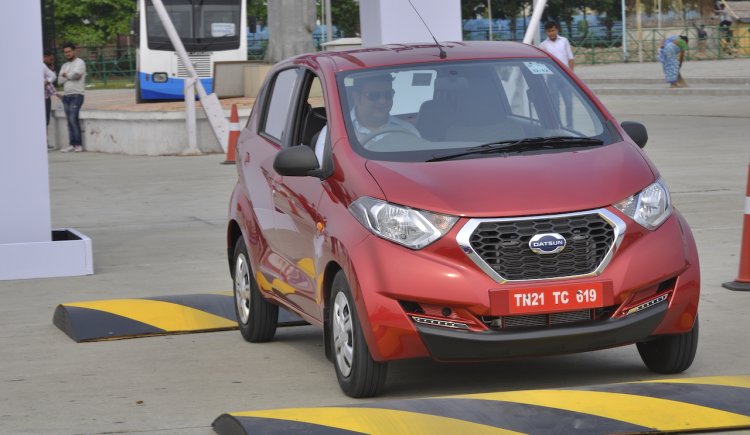
If you're the sort of driver that takes pleasure out of cornering around hilly roads, the redi-GO's handling will not be too disappointing. Despite the high ground clearance and softer setup, the suspension keeps the body roll at bay and helps the redi-GO stick to the corner, as long as its limits are respected.
The speed sensitive electric steering system is so light-weighted that one can change lanes with just a finger at low speeds. Pair that to a tight turning circle of just 9.46 m, and the redi-GO's steering significantly contributes to its good city drivability. On highways however the steering still felt light and lifeless, which doesn't incite confidence when cruising at high speeds. Even though it is capable of negotiating tight U-turns with relative ease, the steering system has a slightly weak return to centre action.
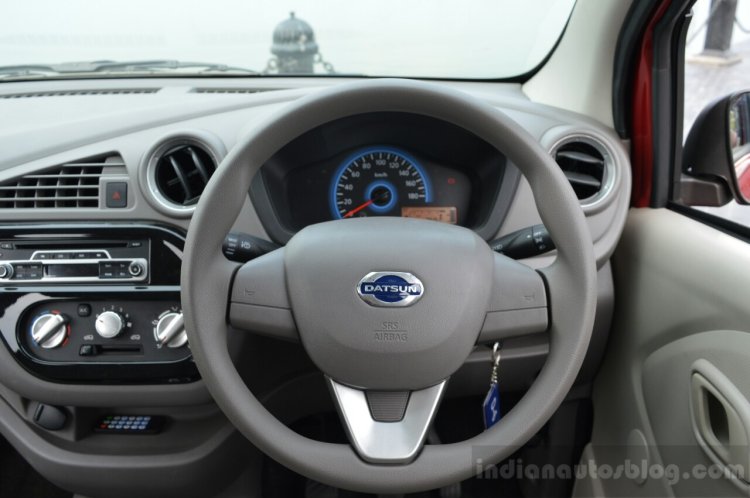
The braking system is claimed to be the best-in-class and it is capable of bringing the redi-GO to a complete halt from 100 km/h in just 32.3 meters. On gradual application of the brake pedal, the stopping force did not feel as progressive as I would've preferred.
Prices:
Datsun hasn't revealed the pricing of the redi-GO yet, although they have stated that it will be priced between INR 2.5 Lakhs - INR 3.5 Lakhs. It will launch for sale on June 1, and bookings are currently open for a minimum amount of INR 5,000.
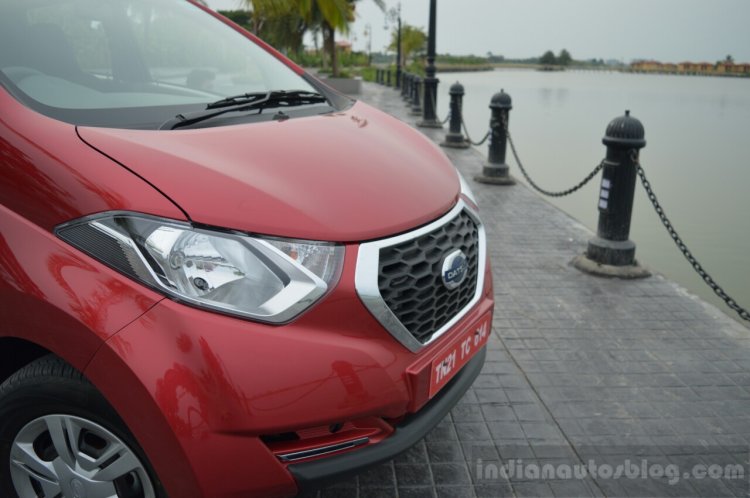
The company promises that the redi-GO will offer best-in-class cost of ownership and is hard at work in setting up service center points across all major cities and towns in India.
Verdict:
The Datsun redi-GO is Nissan's first attempt at replicating the success of the Renault Kwid in the Indian market. It's clear that Datsun has developed the redi-GO around the preferences of a first-time Indian car buyer, as evidenced by the attractive exterior, tall-boy design with best-in-class ground clearance, relatively spacious interior with good comfort levels and a fuel efficient powertrain that offers decent city drivability.
There are a few shortcomings in the Datsun redi-GO with respect to interior build quality and equipment levels, which can be fixed in future updates. An aspect that could decide the redi-GO's success in the market is its pricing. Datsun has announced that the price would start from around INR 2.5 Lakhs, which is a small difference to the Kwid's INR 2.62 Lakhs (ex-showroom) starting price tag. If the Datsun redi-GO's final pricing can significantly undercut its rivals as well as their expected range, there is a chance that it could help turn the tables for Datsun in India.























































